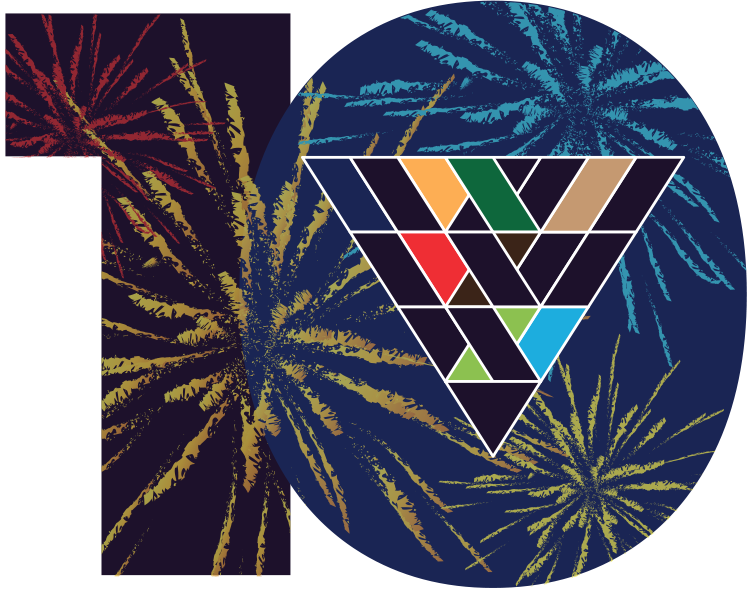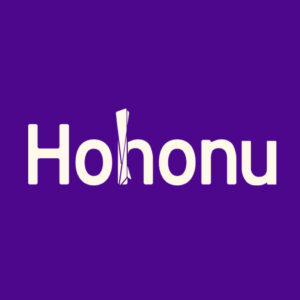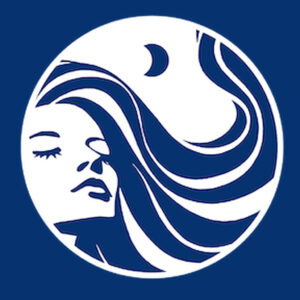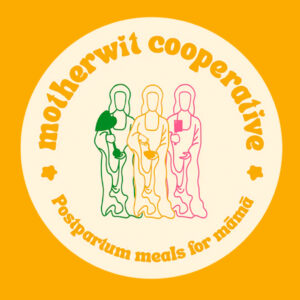On a late Wednesday afternoon about one year ago, I sat down with Donavan Kealoha, Kelsey Amos and Alec Wagner at a downtown Honolulu conference room nervous but mostly excited to be involved in the Purple Prize. After graduating from college earlier that summer, I moved back home from New Hampshire with no plans in place. I was embarking on a gap year(s), looking for experiences and answers I was unable to find during my time as an undergraduate. In a serendipitous meeting with Donavan through an old highschool teacher, I learned about the Purple Maiʻa Foundation and its upcoming indigenous innovation competition. I was intrigued and inspired by Donavan and Kelsey’s vision to both bring young Hawaiians into the technology sector and build an economy where western technology and indigenous ways of thinking and doing are not mutually exclusive. While the world of emerging technologies and startup ventures was completely foreign to me–an Anthropology and Government major–they were looking for someone to document the 2019 Purple Prize. I eagerly accepted the opportunity to witness indigenous innovation in action and share the movement the groundbreaking community the Purple Prize would cultivate. In three parts, I will be sharing the Connections Phase journey as the Purple Prize community rooted learning, connecting and ideating our three piko.
Triple piko
We often refer to our belly button as our piko. It is the tangible remnant of the connection to our mothers who nourished us through our navel the first nine months of our life. Our piko are found in the three centers of our body and encompass the connection and kuleana we have to our past, present and future. This fluid connection is known as the triple piko and is a spiritual, emotional and physical foundation of ‘ohana wellbeing (Becker and Vanclay 2003: 122). The piko po’o is the soft spot at the top of our heads when we are babies; also known as the piko aumakua, it is the piko that connects us to our ancestors, their beliefs and values. Our poʻo is the place where ʻaumākua hover, it is the symbolic umbilical cord between the mortal human and their immortal ancestors. Our piko waena or piko ‘iewe is the navel through which we are bonded to our mother and immediate family; it is the closest piko to our naʻau, which is the center of our present knowledge and emotions. The piko maʻi or piko ‘iwi kuamoʻo is our reproductive organs, which create future generations and by extension, all that we create and establish. Dr. Kekuni Blaisdell shares the meaning behind our three piko.
The triple piko is a central concept in revitalizing, sustaining and fostering ‘ohana wellbeing. Our piko and therefore our wellbeing, are enhanced when we mālama ʻāina and reaffirm our sense of place and relationship to land and genealogy; participate in activities, processes and resources that support and uplift our present ‘ohana; and transmit culture, language, values and Hawaiian ways of knowing and being to our moʻopuna. Innovation — specifically indigenous innovation — is practiced to better the future of our people and environment. While on the surface the Purple Prize is a competition asking its participants to create technology solutions, it is a movement that delves much deeper to engage our triple piko. With the guidance of thought leaders in ʻike kūpuna, business, technology and beyond, the Connections Phase cohort set out to engage and strengthen our three piko.
What is the Purple Prize?
In its third iteration, the 2019 Purple Prize was divided into two parts — the Connections and Building phases. The eight-month program was built as an opportunity for innovators from all backgrounds to learn with and from each other and socialize a different framework for thinking about technology, innovation and their role in creating a better future for all who call Hawaiʻi home. The Connections Phase aimed to help participants:
- Form a well-rounded startup team;
- Learn about social entrepreneurship, technological innovation, business fundamentals, design thinking and Hawaiian values and practices through a series of workshops and events;
- Ideate an indigenous technology enterprise; and
- Win pre-seed funding and the opportunity to incubate in the 2019 Purple Prize Building Phase.
Beyond these four deliverables, the Connections Phase created a space to forge relationships, build community and practice indigenous innovation. We opened Kickoff day with Aunty Puanani Burgess’ “Guts on the Table” activity, which challenges individuals to think from their naʻau and share their story. For an uninterrupted five minutes, we shared the stories behind our names and our gifts we bring to this community with two new friends. From the very first moment of kickoff day, the Purple Prize felt more like a baby lūʻau with aunties, uncles, cousins and friends coming together to celebrate a shared vision of aloha ʻāina and aloha ke kahi i ke kahi rather than a traditional business accelerator.
Piko ʻAumakua
There is no exit strategy in indigenous innovation. This was the message from keynote speaker, Senator Jarett Keohokalole of Kāneʻohe at the 2019 Purple Prize Kickoff Day. On a rainy Saturday morning in February, participants and friends gathered at the KEY project in Kahaluʻu to celebrate the beginning of the four month Connections Phase. The Purple prize community gathered for a day unpacking indigenous innovation, working together in the loko iʻa at Paepae o Heʻeia and learning from past Purple Prize alums like Brian Glazer of Hohonu and Kiana Frank of Innovative Iʻa Kilo. Before diving into the ideation stage or even exploring technology in indigenous innovation, it was essential the Connections Phase cohort became maʻa with our piko ʻaumakua and the deep epistemology Hawaiian ancestors passed through generations. Participants were asked to put their technology ideas aside and be open and ready to unpack, (re)learn and connect with each other and indigenous innovation.

Defining Indigenous Innovation
Purple Maiʻa co-founder and VC, Donovan Kealoha guided us through unpacking this big picture. He moderated a panel with thought leaders from both the entrepreneurial and indigenous spaces to help us deconstruct the terminology and framework behind “indigenous,” “innovation” and “indigenous innovation.” Ian Musson, founder of Kōkiri, a Māori business accelerator, defined innovation as the act of intertwining multiple thought processes and skill sets for the benefit of society. Lee Timutimu, founder of Arataki Cultural Trails emphasized that indigenous people have always been innovators– he cited ancestral innovations such as Polynesian wayfinding, loko iʻa and ʻauwai as evidence that innovation is not limited to emerging technologies.

The term “indigenous” is often equated to the people whose ancestors originate from a specific place and who maintain aspects of their ancestors’ cultural beliefs and practices. This understanding of “indigenous” is limiting to only those who can trace their ancestry to a specific culture rooted in place and excludes non-indigenous folks from participating in indigenous innovation. Donovan posed this concern, asking panelists to reflect on the exclusivity indigenous innovation. The panelists agreed that practicing indigenous innovation was not exclusive to people with indigenous ancestry. Dr. Kiana Frank, University of Hawaiʻi Professor of microbiology noted it is the indigenous cultural narrative and framework of understanding that informs indigenous innovators, not the determination if one is considered indigenous themselves.
The Purple Prize creates a space where “innovation” and “indigenous” come together. Indigenous Innovation is more than these labels that categorize businesses and organizations. We have been practicing it for generations and generations. No matter the kind of business model or structure an indigenous innovator creates, it is the value they are producing for people and the framework in which it operates that are considered indigenous innovation. While indigenous innovation could be characterized as an ancient technology like Polynesian wayfinding or as an IOS application that helps users learn ʻŌlelo Hawaiʻi, connection and intention is the foundation of indigenous innovation. Dr. Frank noted in the kickoff day panel that building relationships is where reciprocity, intent and understanding are rooted. And reciprocity, intent and understanding are key to practicing indigenous innovation in a pono way where indigenous thought and practices are not extracted from communities and commodified by non-indigenous folk.
Indigenous Innovation in Practice
Our indigenous ancestors were innovators centuries before the invention of the computer and the worldwide web. Indigenous is not limited to those who can trace their ancestry to a specific place, but rather encompasses the cultural narrative and values that we practice. Building relationships with reciprocity, intent and understanding is the cornerstone of indigenous innovation. This was the framework in which the Purple Prize challenged its participants to ideate and build technology solutions. But how do we go about being indigenous innovators ourselves? A second panel moderated by Purple Maiʻa co-founder Kelsey Amos asked three innovators to reflect on what indigenous innovation looks like in practice.

Strategy officer at Hawaiʻi Broadband Initiative and host of Hawaiʻi Public Radio’s Bytemarks Café, Burt Lum spoke about his relationship with technology and the lessons he learned from his time in both the private and public sector. For Lum, if we want to make a difference in our community, we need to be involved in “civic tech,” and find new and innovative ways for our community to have an active and strong voice in our local government. Community organizer, James Pakele shared his work at Pu’uhonua o Waiʻanae, which operates on the kauhale model of community based living. Pakele is practicing indigenous innovation while disrupting the system we live in today by recognizing the fact that some people (especially indigenous people) are not built to thrive in the western means of success. For him, collective success is how you build individual success. Hawaii Investment Ready CEO and founder of ʻŌiwi TV, Keoni Lee brought us to understand the theory of change innovation is constructing. He noted that social enterprises are an incomplete theory of change. To fully realize indigenous innovation, we need to become successful in the dominant system while also subverting it. To be successful while also subverting the dominant ecosystem we live in, a community-first perspective where relationships are greater than transactions is key. At the end of these two panels, it was clear indigenous innovation can be expressed and practiced in many ways. It was the intention, the relationships and indigenous framework that sets indigenous innovation apart. Indigenous technology and enterprises do not have an exit strategy where investors gamble their money with an expected return date looming in the future; the investment in indgeinous technology and enterprises are in the wellbeing of ʻāina and community.
Building Empathy & Forging Roots
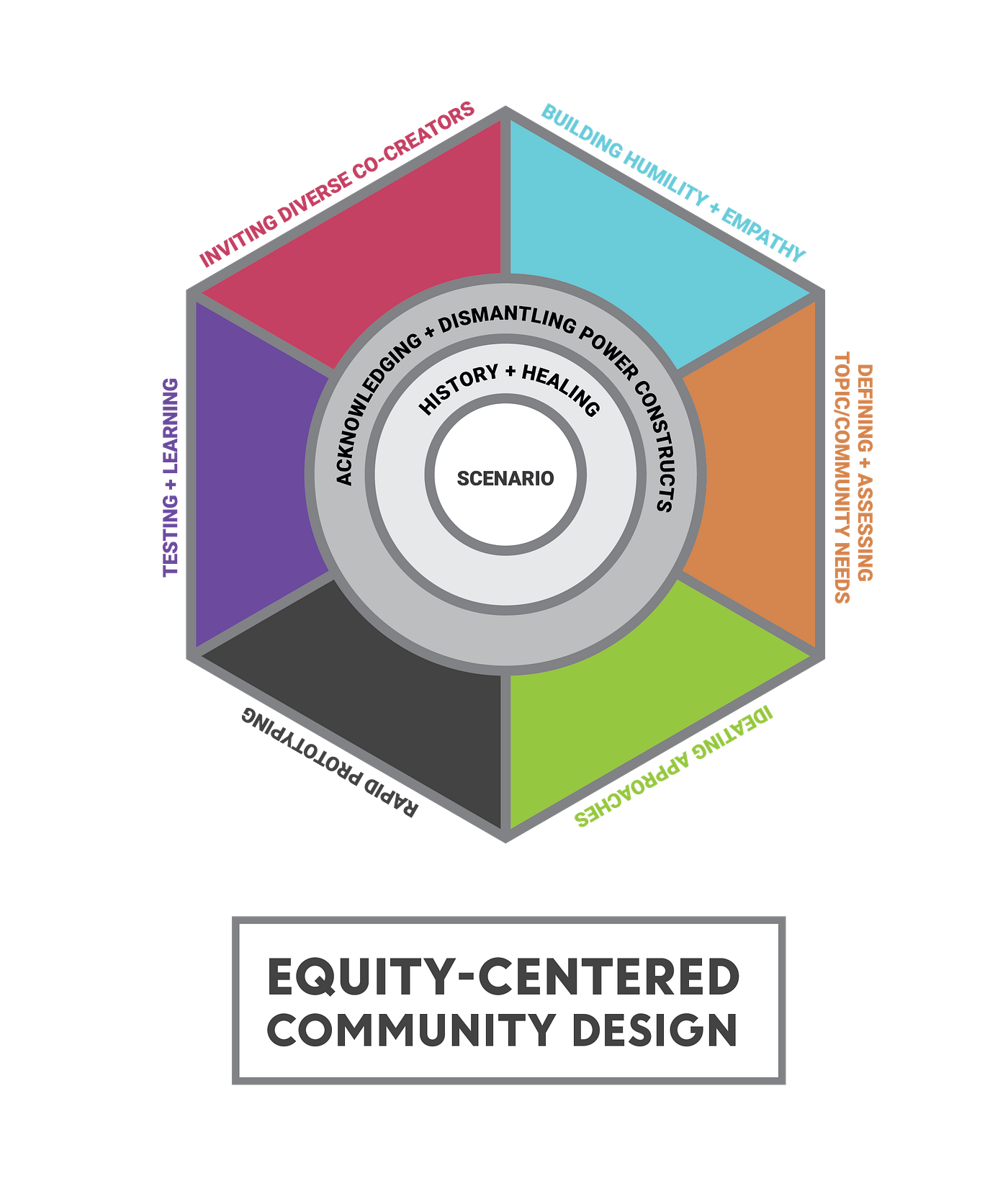
The Connections Phase workshops were structured with equity-centered community design (ECCD) in mind. ECCD is a dynamic system to solve complex issues; it is neither a linear nor step-by-step process. Human equity is the foundation of ECCD. Human equity is realized when outcomes are not predictable based on one’s identity or characteristics such as socioeconomic status, ethnicity, sexual orientation, gender, ability, etc. ECCD and indigenous innovation meld seamlessly as human equity and community is central to the solution building process. The ECCD framework is fluid in its design, integrating history, healing, and acknowledging and dismantling power constructs as crucial factors in every step of the solution building process. While kickoff day set the mindset of the Purple Prize as an equitable space to practice indigenous innovation, the first Connections Phase workshops tackled the first step toward becoming indigenous innovators–building empathy and forging roots.
Building Empathy
With the framework of indigenous innovation fresh in our minds from Kickoff day, the Connections Phase cohort started their personal journeys on becoming familiar, vulnerable and reflective. We traveled to Kākoʻo ʻŌiwi on the windward side of Oʻahu for a day of work — both in the loʻi and with each other. We started our morning with a tour of Kākoʻo ʻŌiwi; we learned about the ʻauwai system and the history of Heʻeia. Organizations like Kākoʻo ʻŌiwi, Paepae o Heʻeia and the KEY Project are working together to restore Heʻeia to the regenerative and prosperous ahupuaʻa it once was when indigenous technologies sustained the ʻāina and its people. We then put our hands and feet to work– some of us stomping and churning nutrients in the mud to prepare the loʻi to grow a new harvest of kalo and others learning from Purple Maiʻa Co-founder, Olin Lagon how kuʻi kalo and transform kalo roots into delicious paʻiʻai. Kekoa Plauche, a Connections Phase participant shared with us the story of Hāloa naka, the stillborn child of Hoʻohōkūlani and Wākea, whose grave sprouted the first kalo root to nourish his younger brother, Hāloa– the first Hawaiian. After Kekoa shared this moʻolelo, the rest of the group opened up and shared stories from their culture and childhood. We were collectively building a greater appreciation, understanding and empathy for the ʻāina-based, innovative practices our indigenous ancestors created.

In addition to immersing our community in the regenerative framework of indigenous innovation, we spent our day together at Kākoʻo ʻŌiwi taking an introspective look into our identities through a cultural competency exercise. It was important to self-reflect on our own experiences and to share pieces of our history with others to build empathy.

The first step of ECCD calls us to build humility and empathy. Humility is recognizing your own biases and perspectives when trying to understand another’s emotions, experiences and actions while empathy is the active attempt to understand another’s emotions, experiences and actions by imagining yourself in another’s shoes. Humility and empathy are the building blocks of ECCD as it helps us understand others while also acknowledging our own biases. It is critical for self-awareness and reflection–which take time and trust–but ultimately lead toward stronger and more equitable community-based solutions. Our day together getting muddy, experiencing indigenous innovation in action and reflecting inward at Kākoʻo ʻŌiwi, gave us all a deeper, more personal understanding and appreciation for the challenge ahead to build a regenerative technology solutions.
Forging Roots
The next step in Equity Centered Community Design focuses on history and healing. Within the context of structural oppression of indigenous communities across the globe–but especially within Hawaiʻi’s own colonial oppression–vital stories and identities have been ignored and erased. The second Cultural Starting Points workshop aimed to forge our roots to these forgotten yet vital histories. Our day at Ka Waiwai in Mōʻiliʻili focused on broadening our understanding of historical events that shaped the islands we know today as well as deepening our connection to Hawaiian ways of thinking. We listened to thought leaders and learned from each other’s perspectives on Hawaiʻi’s history from the kumulipo to the overthrow of the Kingdom to the obstacles Native Hawaiian business owners today face in their work. After welcoming each other and chanting E Hō Mai to start the day, the energy shifted in the room as we embarked on a busy day filled with reflection, (re)learning and collective healing.
We dove straight into the history books. The cohort split into groups to explore primary sources, academic articles and to share personal manaʻo with each other about various events in Hawaiʻi’s history such as the near extinction and revival of ʻōlelo Hawaiʻi, military occupation, the 1893 overthrow of the Kingdom, and the UN Declaration on the Rights of Indigenous Peoples. Kelsey Amos aptly introduced this collective deep dive into history.
“If you come into a room and started doing whatever you want to do and say whatever you want to say without knowing what’s been going on in that room before you entered, that’s weird and uncomfortable. That’s how I view history and why this activity is important to review and gain a collective understanding on where what topics continue to shape and influence the Hawaiian community.” — Kelsey Amos

Kelsey’s goal to build collective understanding and unpack the raw emotion embedded in Hawaiʻi’s history unfolded in many groups. Connections Phase participant Dan Kinzer noted, “I was in the group looking at the annexation and overthrow. There is so much emotion and even for a couple of my Hawaiian braddahs in the group, there is anger. I am trying to understand all of this because it is part of what we have to innovate around.”
From our group activity examining historical events, thought leader from Hō Mai Ka Pono, Tom Penna brought us to place– specifically to the place-based thinking forgotten in history. In a massive map of Oʻahu that stretched from one side of Ka Waiwai to the other, we walked around Oʻahu noting the actual place names of our neighborhoods, before Oʻahu was conquered by Kamehameha ʻekahi. Tom shared the ʻike he learned from kūpuna about the island of Oʻahu while standing on a map of the island with the indigenous place names of each wahi, ʻili and ahupuaʻa in the moku. He challenged us to think about the vast ʻike that was forgotten when Kamehameha ʻekahi and the arrival of Captain Cook introduced new, dominant narratives and histories. We tend to focus on our modern history as Hawaiians from the Hawaiian renaissance to the illegal occupation and overthrow of our Kingdom. Many times, the Hawaiian history written in books focus on the lives and work of aliʻi and leave out the stories and moʻokūʻauhau of our makaʻāinana in the past.

Native Hawaiian Program Specialist at Papahānaumokuākea Marine National Monument (PMNM), Kalani Quiocho deepened our ability to conceptualize Hawaiian thought in western practice. He introduced the Native Hawaiian development plan for the marine monument, which is rooted in the kumulipo and duality of Pō (light) and Ao (darkness). The management plan resonates with the Hawaiian community incorporating cultural frameworks while also being accessible and understood by all PMNM managers. For many of us, Kalani’s work showed a path forward. As indigenous innovators, we do not have to sacrifice our ʻāina-based, culturally rooted ethos to create a successful business. It is possible–and better for our community and our environment–to create solutions that are both conceptually Hawaiian and viable in a western context.

From the Kickoff day to the Cultural Starting Points workshops, the first events of the Connections Phase grounded our community in piko ʻaumakua and the regenerative framework in which our Hawaiian ancestors were innovators. By the end of our day at Ka Waiwai, we all felt a little different. One participant noted, “It is a different feeling, all of us here are supporting the same cause…we are here for the same reason. The room just feels different. Before e hō mai, we were all here for Purple Prize workshop but then the next person came in, then the next speaker came in, and I was blown away by the deep knowledge and connection we were all feeling together.” Another participant shared, “I feel good about the people that are here. We are not here for money, we are here for a purpose. I feel a little more empowered and a little more supported from meeting great people who are all working toward a greater good.” Our time together at the KEY project, Kakoʻo ʻŌiwi and Ka Waiwai centering ourselves in piko aumakua was only the beginning of a transformative Purple Prize journey.

Sources
Becker, H. A. and Vanclay, F. The International Handbook of Social Impact Assessment: Conceptual and Methodological Advances (Edward Elgar Publishing Ltd. Northampton, MA 2003).
Equity Centered Community Design Field Guide (Creative Reaction Lab, St. Louis, MO 2018).
